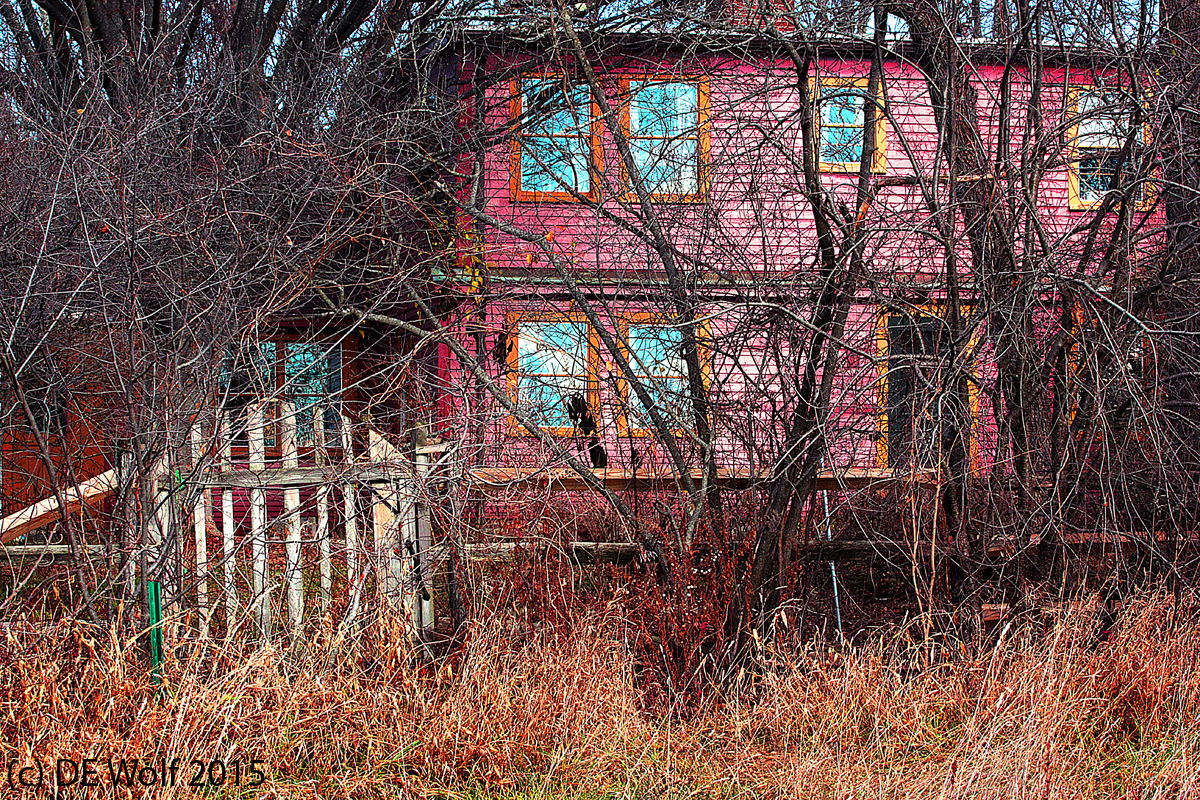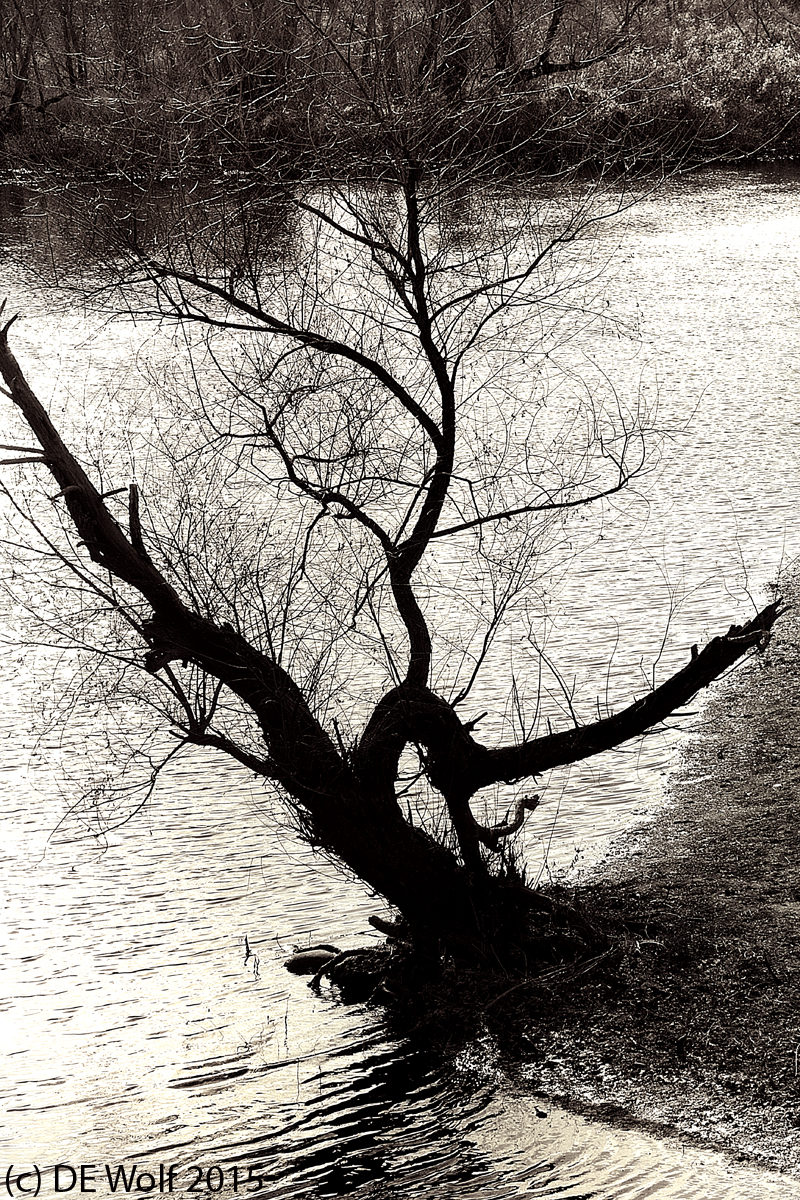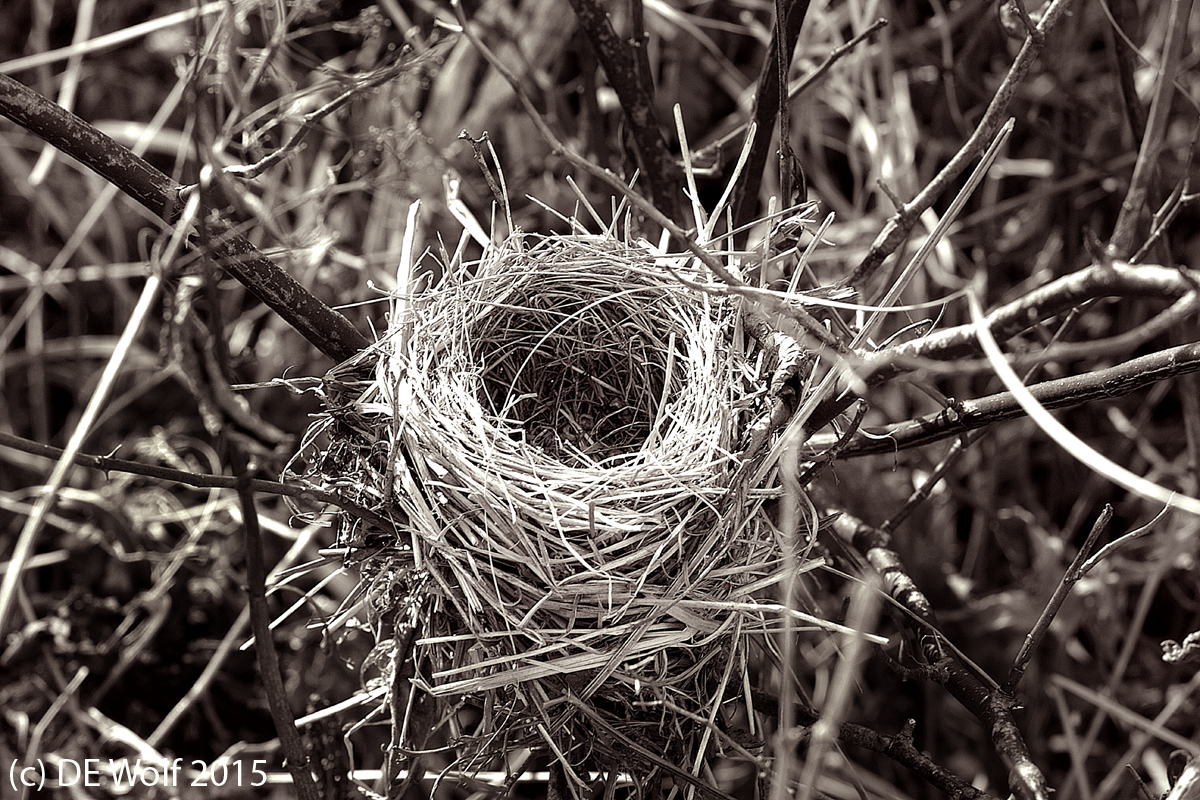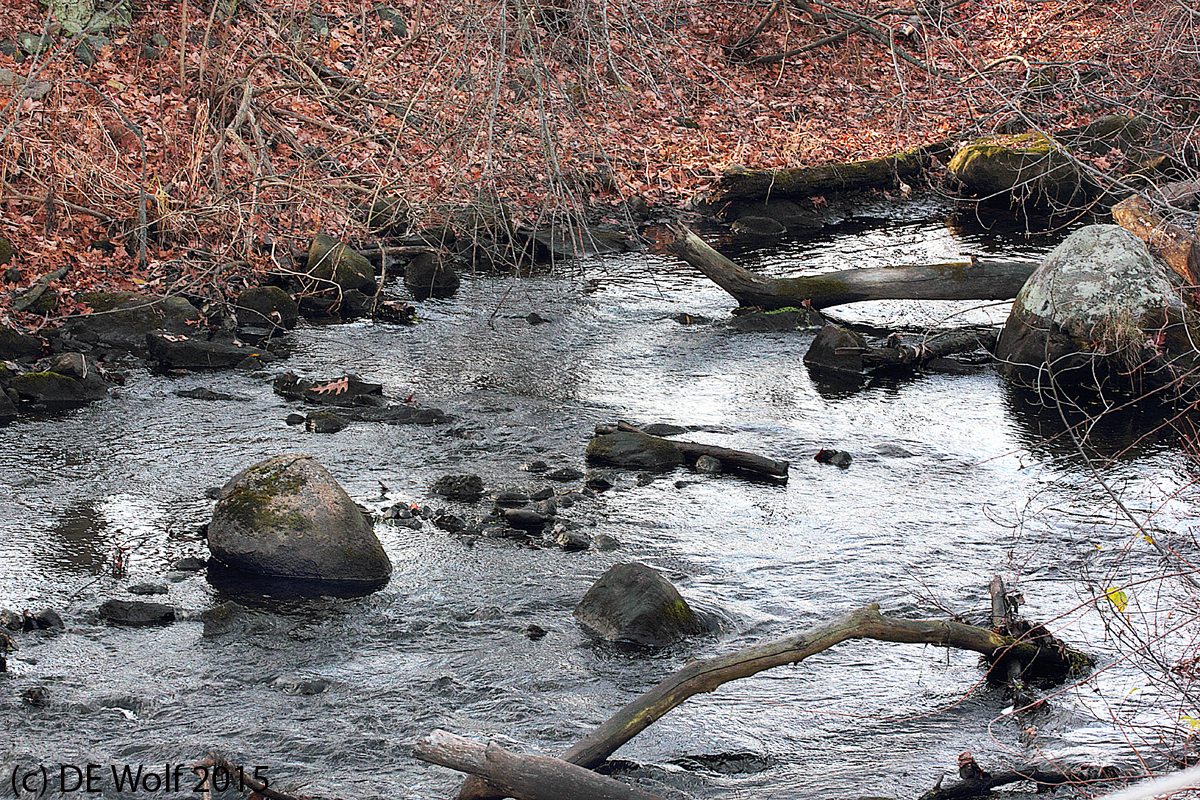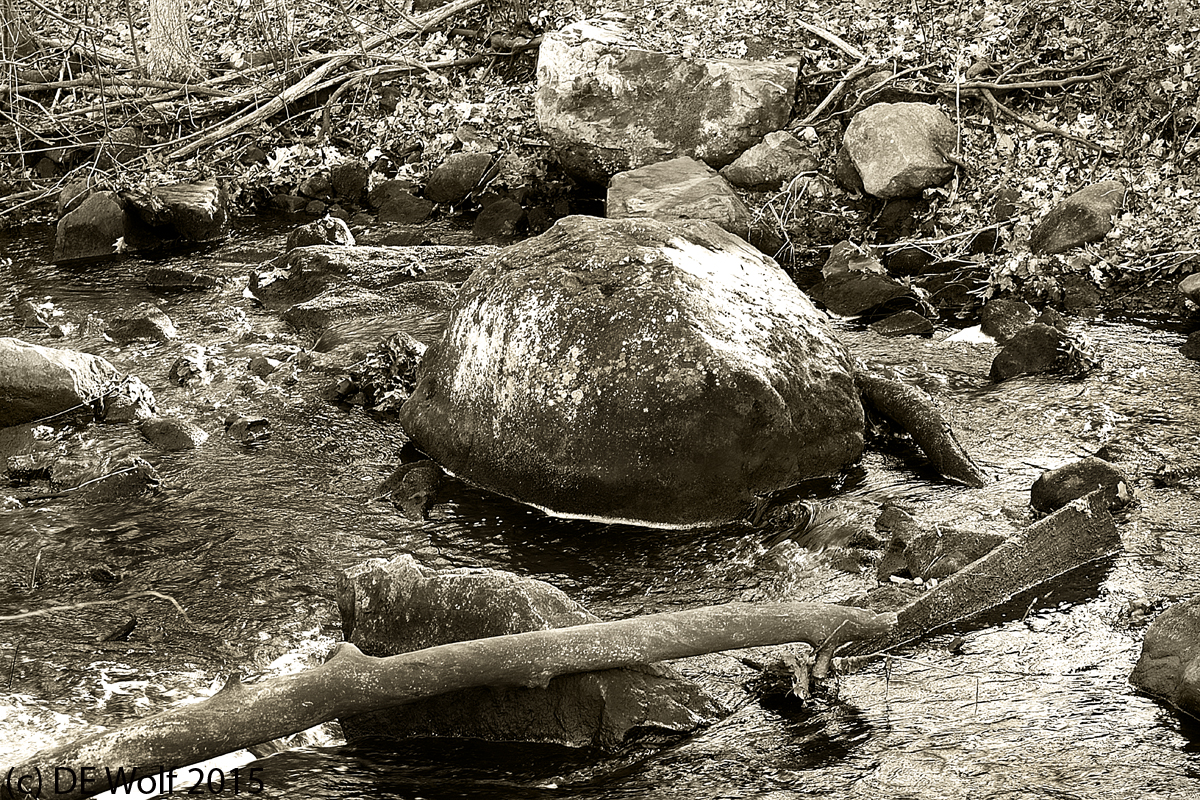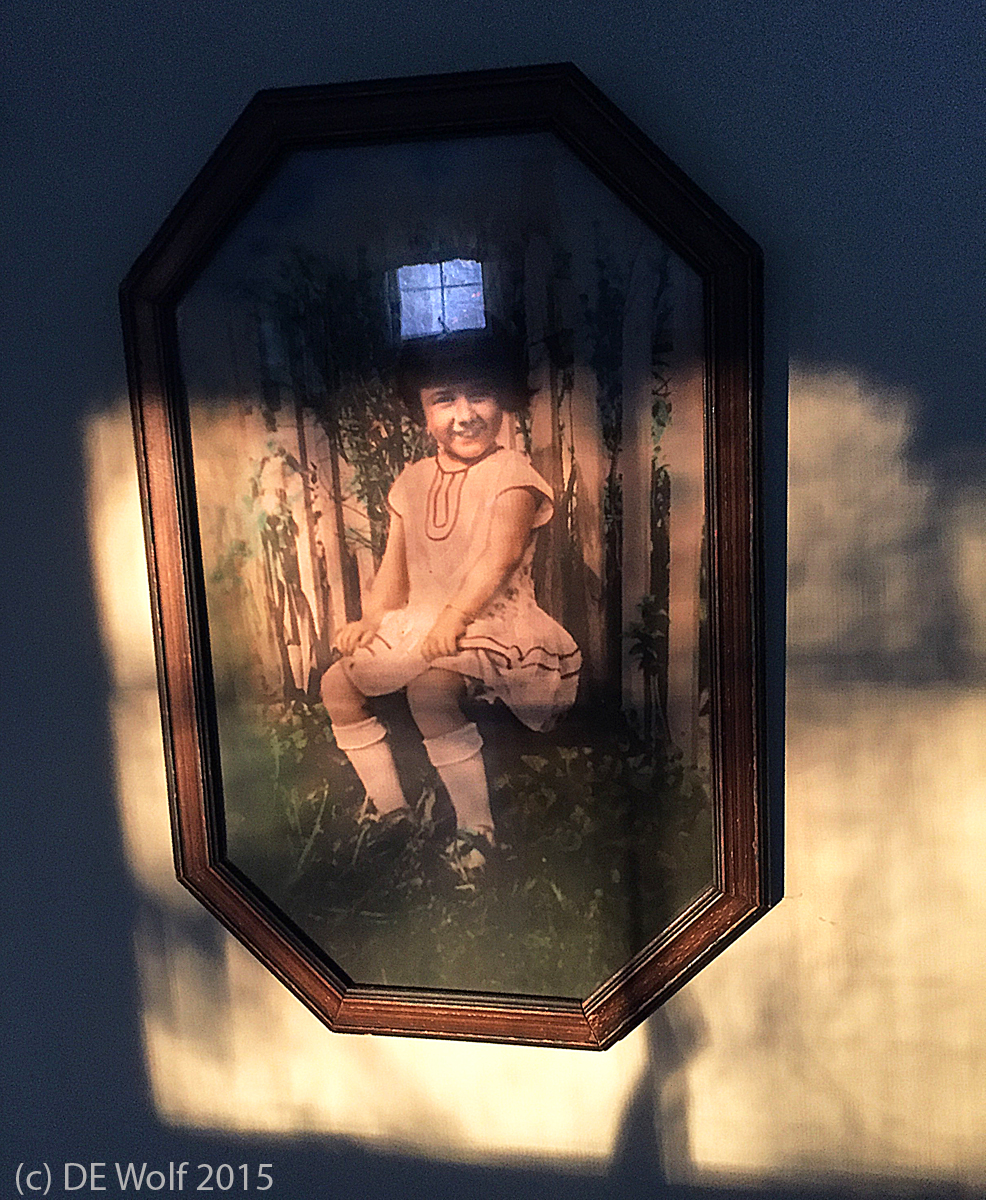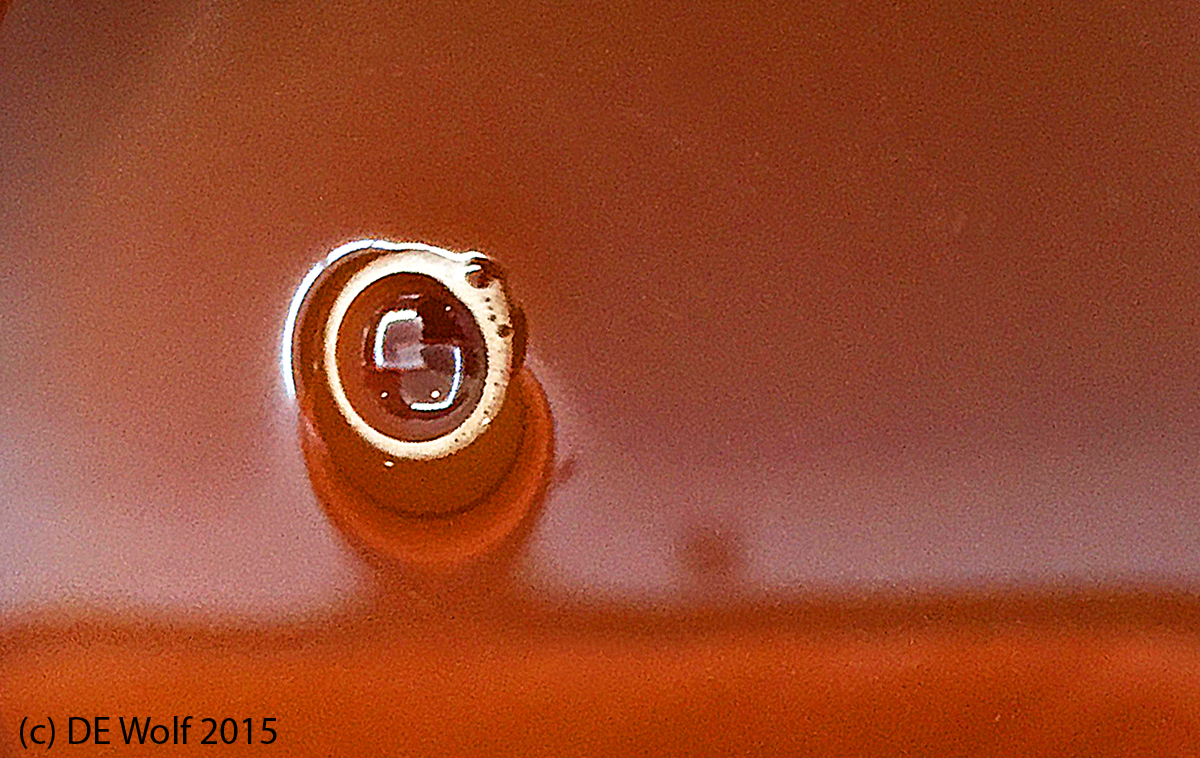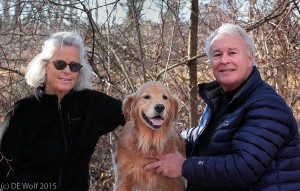
Figure 1 – Grace, Crumpet, and Keith at Heard’s Farm, December 12, 2015. (c) DE Wolf 2015.
It was a most unwinterly 60 deg. F (15 deg C) in Sudbury this morning and my canine neighbor, Crumpet, was kind enough to invite me on an adventure at the Heard’s Farm Conservation land in Wayland, MA. If you are to understand her sacrifice, you must recognize that I was forever talking to her father (Keith), when he should have been throwing sticks for her, and also we were not quite keeping up the pace. Still my poking around with my camera in the scrub gave her plenty of opportunity to try for an un-noticed swim in the Sudbury River. But her mom (Grace) always managed to thwart her efforts. In the end the three paused long enough for a group picture (Figure 1), and Crumpet obliged me by climbing up on a log in a most undoglike manner. Still she was happy to be with people as she always is. In fact, my sense with dogs has always been the more the merrier!
Heard’s Farm is on Pelham Island and historically was owned by the Nipmucks of the Algonquin tribe. As I have indicated in a previous blog, Sudbury and Wayland featured prominently in King Phillip’s War. Pelham Island was, in fact, part of a separate land grant from the original Sudbury land grant that founded the two towns and was given to Herbert Pelham, who was the first treasurer of Harvard College. Herbert willed the Island to his son Edward in 1672. Today Heard’s Farm is part of gorgeous conservation land in the Sudbury watershed that also includes the Great Meadows National Wildlife Refuge that abuts it.
It is late fall and this is defined by stark leafless landscapes and reddish orange decaying leaves. We were circumnavigating the field, when I noticed the wispy cirrus clouds of Figure 2 crowning the naked trees along the horizon. The whole sense of the pictured: the colors, the textures, and silhouettes define the New England season to me. And the whole point is that whatever season you are in, in Massachusetts, there is always life in the landscape: life in the tree buds, life in the decaying leaves, and life in the wild birds. The phrase “a lifeless landscape” is indeed an oxymoron here.
Thank you, Crumpet, for taking me along!

Figure 2 – Heard’s Farm, Wayland, Massachusetts, December 12, 2015. (c) DE Wolf2015.
Canon T2i with EF70-200mm f/4L USM lens at 70 mm, ISO 400, Aperture Priority AE mode, 1/200 th sec at f/7.1 with -1 exposure compensation.

